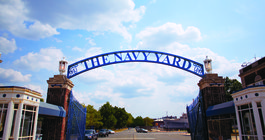
May 02, 2015
On Friday, the United States and Canada released a massive report detailing new regulations and timeframes to modernize the shipment of flammable liquids by rail, a dangerous industrial system that has long been in need of safety improvements.
The new rules primarily address non-pressurized steel tank cars known as DOT-111's, which carry flammable liquids such as petroleum crude and ethanol. The purpose of the regulations is to prevent deadly disasters such as the July 2013 explosion in Lac-Megantic, Quebec that killed 47 people.
In the United States, the much of the focus is on Bakkan Shale oil from North Dakota, where a boom continues to send trains to refineries around the country.
The DOT-111's have come under scrutiny for their susceptibility to puncturing or highly volatile spills in the event of derailments.
As Isaiah Thompson writes for NECIR, the new rules fall short of many recommendations by environmental groups, watchdogs, and government agencies outside the Department of Transportation, which released the report.
[The] rules, the first of which go into effect this October, fall short – significantly short, in some cases – of calls for greater safety measures by environmental and watchdog groups, as well as other agencies within the government. They also, in some cases, fail to address design flaws in train components linked to spills and leaks in major accidents as well as hundreds of minor incidents reviewed by the New England Center for Investigative Reporting and WGBH-News.
Specifically, some of the recommendations may not adequately address long-troubling issues about speed limits, train design standards, and definitions of liquids. The timeframes in the report also allow existing dangers to persist for lengthy periods before trains are retro-fitted to new requirements.
Groups including the Sierra Club, the National Resources Defense Council, and EarthJustice criticized the new rules for leaving communities at risk of catastrophe. They have called for bans that would halt continued use of hazardous trains until safety requirements are met.
Read the full story at NECIR.